In the modern world of construction, transportation, and advanced manufacturing, the demand for materials that offer both incredible strength and minimal weight is constant. Traditional materials often force a compromise between these two critical factors.
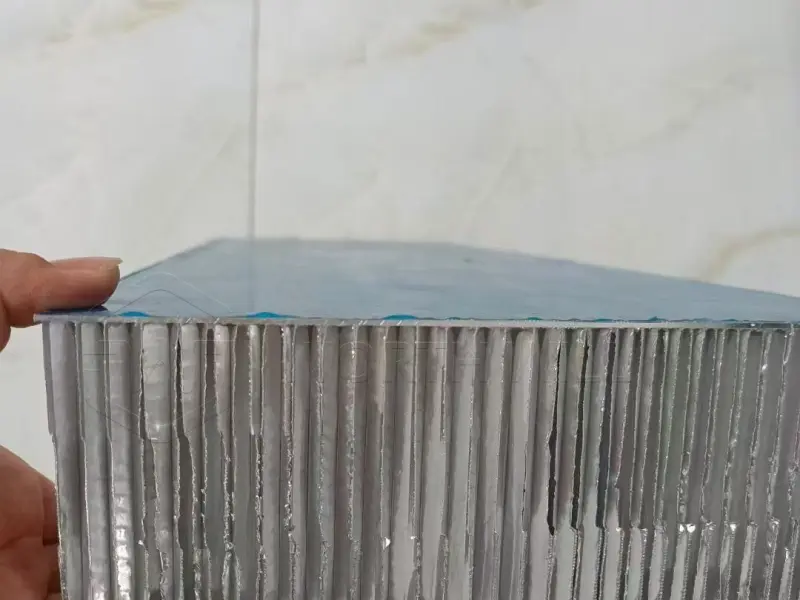
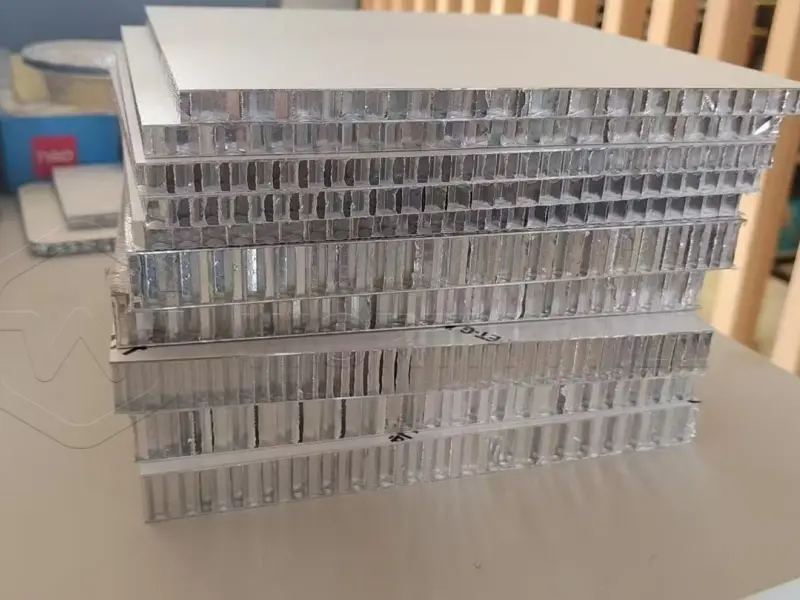
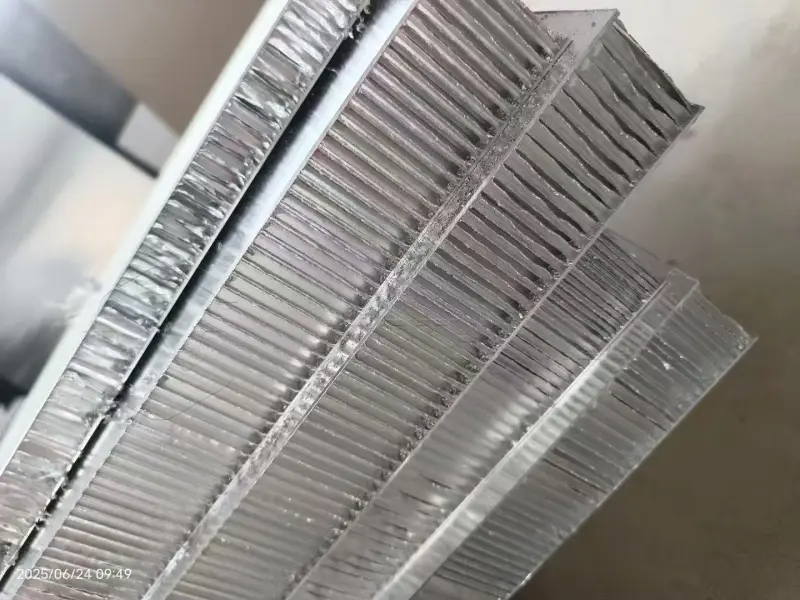
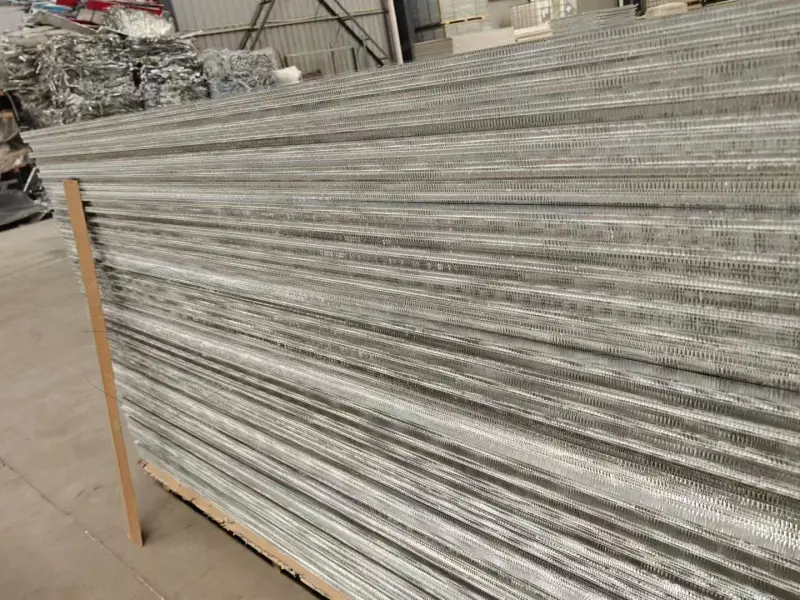
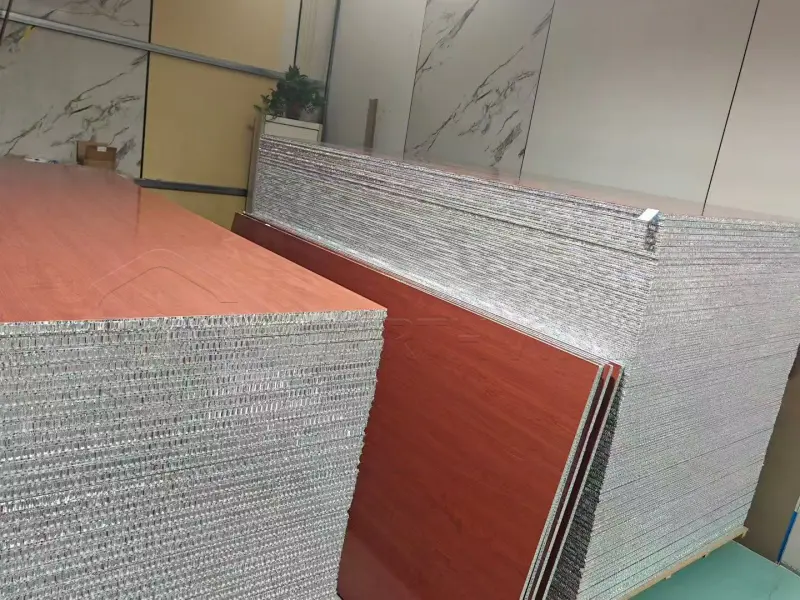
However, honeycomb aluminum sandwich panels have emerged as a groundbreaking solution, redefining possibilities with their exceptional performance.
What are Honeycomb Aluminum Sandwich Panels?
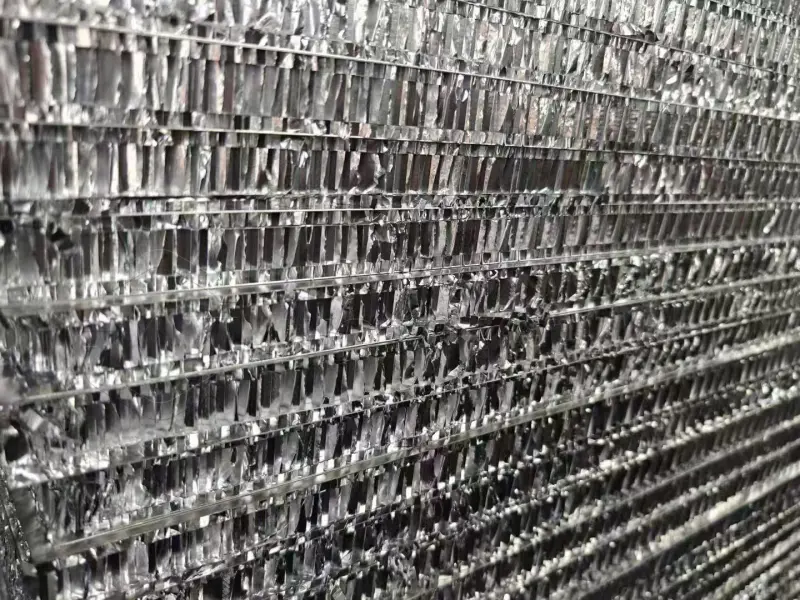
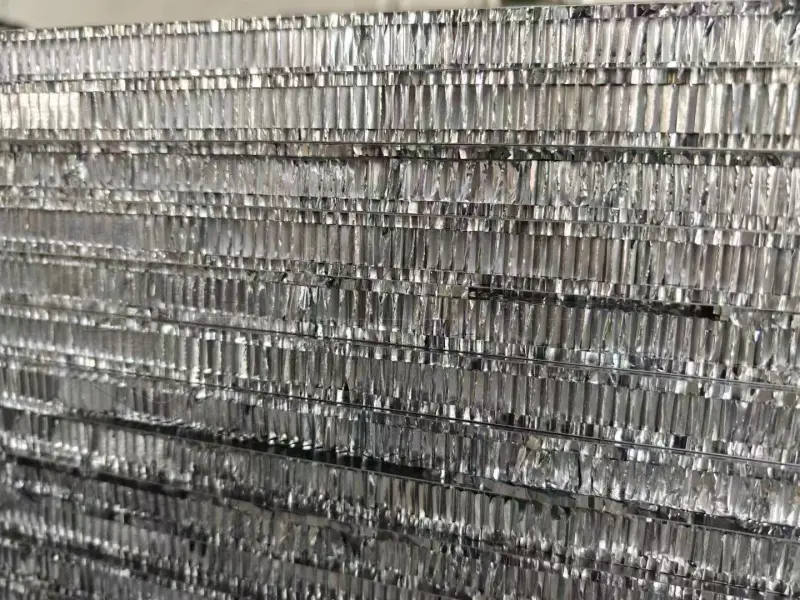
A honeycomb aluminum sandwich panel is an advanced composite material constructed with a unique “sandwich” structure. It consists of two relatively thin, high-strength aluminum face sheets bonded to a much thicker, lightweight aluminum honeycomb core.
- Face Sheets: These outer layers provide the panel’s stiffness, impact resistance, and surface finish. They bear the primary bending and compressive loads.
- Honeycomb Core: This central layer is made from thin aluminum foil formed into a hexagonal (honeycomb) pattern. It provides exceptional shear strength and prevents the face sheets from buckling. The vast majority of its volume is open space, which is why the panel is so lightweight.
- Adhesive Layer: A high-performance adhesive bonds the face sheets to the honeycomb core, ensuring a strong, durable, and inseparable connection.
This intelligent design allows the panel to achieve an extraordinary strength-to-weight ratio, making it an ideal choice where both lightness and rigidity are paramount.
Key Features and Benefits of Aluminum Honeycomb Panels
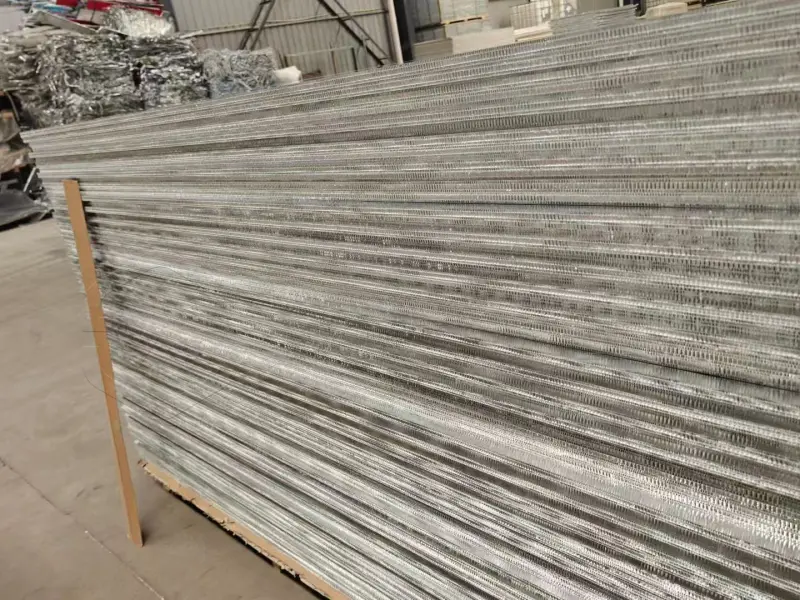
The unique construction of honeycomb aluminum sandwich panels translates into a host of advantages that make them superior to many traditional materials:
- Exceptional Strength-to-Weight Ratio: This is the defining characteristic. They are incredibly stiff and strong for their weight, significantly reducing structural loads.
- High Rigidity and Flatness: The honeycomb core ensures remarkable panel rigidity, preventing bowing or deformation even over large spans. This results in superb aesthetic flatness.
- Superior Fire Resistance: Being made primarily of aluminum, these panels are inherently non-combustible, contributing to enhanced fire safety in buildings and other structures.
- Excellent Corrosion Resistance: Aluminum’s natural oxide layer provides outstanding resistance to rust and various environmental corrosives, ensuring long-term durability.
- Sound and Thermal Insulation: The trapped air within the honeycomb cells offers good sound dampening and thermal insulation properties, contributing to energy efficiency and quieter environments.
- Versatile Design and Fabrication: They can be easily cut, formed, and integrated into complex designs, offering architects and engineers immense flexibility.
- Eco-Friendly: Aluminum is 100% recyclable, making aluminum honeycomb panels a sustainable choice for environmentally conscious projects.
- Impact Resistance: The combined strength of the face sheets and the core provides good resistance to impacts and local loading.
Classification of Honeycomb Aluminum Sandwich Panels
Honeycomb aluminum sandwich panels can be classified based on several key characteristics.
1. Core Type
While the article focuses on aluminum, it’s worth noting the core structure.
- Standard Aluminum Honeycomb Core: The most common, providing balanced properties.
- Perforated Aluminum Honeycomb Core: Features small perforations in the cell walls, primarily used for acoustic applications to enhance sound absorption.
2. Face Sheet Finish
The outer aluminum face sheets can come in various finishes to meet aesthetic and performance requirements.
- Mill Finish: Raw aluminum surface, often used where the panel will be covered or for internal structural components.
- Pre-Painted (PVDF/PE): Applied with durable paint coatings like PVDF (Polyvinylidene Fluoride) for excellent weather resistance and color stability, or PE (Polyester) for interior applications. Available in a vast range of colors.
- Anodized: An electrochemical process that thickens the natural oxide layer, enhancing corrosion resistance and creating a harder, more durable surface, often in various metallic shades.
- Brushed or Polished: For a specific metallic aesthetic.
3. Panel Function/Application
Sometimes, panels are classified by their intended use, which dictates their specific properties.
- Architectural Cladding Panels: Designed for exterior building facades, requiring high weather resistance and flatness.
- Interior Decorative Panels: Focus on aesthetics, flatness, and sometimes acoustic properties.
- Structural Panels: Emphasize strength, rigidity, and often specific load-bearing capabilities.
Thickness of Honeycomb Aluminum Sandwich Panels
The thickness of honeycomb aluminum sandwich panels refers to the overall thickness of the assembled panel, as well as the individual components (face sheets and core). These dimensions are critical for determining the panel’s strength, rigidity, and weight.
Overall Panel Thickness
This is the most commonly specified dimension and can range significantly:
- Thin Panels (e.g., 6mm – 15mm): Ideal for interior decoration, ceilings, furniture, and lighter structural elements.
- Medium Panels (e.g., 15mm – 30mm): Standard for exterior architectural cladding, general transportation, and flooring.
- Thick Panels (e.g., 30mm – 100mm+): Used for heavy-duty structural applications, large span elements.
Component Thicknesses
- Face Sheet Thickness: Typically ranges from 0.5mm to 1.5mm. Thicker face sheets increase rigidity and impact resistance. Common options include 0.7mm, 0.8mm, 1.0mm.
- Honeycomb Core Cell Size: Refers to the diameter of the individual hexagonal cells. Common sizes are 4mm, 6mm, 9mm, 12mm, 19mm. Smaller cell sizes generally provide higher shear strength and density but can be heavier.
- Honeycomb Core Foil Thickness: The thickness of the aluminum foil used to create the honeycomb core, usually very thin, ranging from 0.04mm to 0.08mm.
Here’s a table showing common thickness combinations and their impact:
| Overall Panel Thickness (mm) | Face Sheet Thickness (mm) | Core Cell Size (mm) | Typical Application | Characteristics |
|---|---|---|---|---|
| 6 – 10 | 0.7 – 0.8 | 6 – 9 | Interior Walls, Furniture | Lightweight, Good Flatness |
| 15 – 20 | 0.8 – 1.0 | 6 – 12 | Exterior Cladding, Flooring | Balanced Strength & Weight |
| 25 – 30 | 1.0 – 1.2 | 9 – 19 | Large Facades, Railcars | High Rigidity, Excellent Flatness |
| 50+ | 1.0 – 1.5 | 12 – 19 | Structural, Specialized | Maximum Strength & Stiffness |
Alloy for Honeycomb Aluminum Sandwich Panels
The specific aluminum alloy chosen for both the face sheets and the honeycomb core is crucial for determining the panel’s mechanical properties, corrosion resistance, and workability.
1. Face Sheet Alloys
- 3003 H14/H18 Alloy: This is the most common alloy for face sheets. It offers excellent corrosion resistance, good formability, and moderate strength. The “H14” or “H18” temper provides the necessary stiffness and durability for architectural and general applications.
- 5052 H32/H34 Alloy: Used when higher strength or superior corrosion resistance (especially in marine environments).
2. Honeycomb Core Alloy
- 3003 H18 Alloy: The predominant alloy for the honeycomb core. Its excellent formability allows for the creation of precise hexagonal cells, and its inherent strength contributes to the overall panel’s rigidity and shear strength. Its good corrosion resistance also matches that of the face sheets.
The selection of these specific aluminum alloys ensures that honeycomb aluminum sandwich panels provide reliable performance and longevity in diverse environments.
Packaging of Honeycomb Aluminum Sandwich Panels
Proper packaging is essential for honeycomb aluminum sandwich panels to prevent damage during transit and storage.
Typical Packaging Procedures:
- Surface Protection: Each panel typically has a removable protective film (often clear or blue) applied to its finished face during manufacturing. This film shields against scratches, abrasions, and minor impacts.
- Interleaving Material: When panels are stacked, foam sheets, cardboard, or non-abrasive paper are often placed between individual panels. This prevents surface-to-surface contact and protects the finished coatings.
- Edge and Corner Protection: Plastic or foam corner protectors and edge banding are to safeguard the panel edges, which are vulnerable to chipping or denting.
- Sturdy Pallets or Crates: Panels are stacked flat on robust wooden pallets or placed within custom-built wooden crates. These provide structural support and prevent flexing or bending during transportation.
- Securing and Wrapping: The entire stack or crate is securely fastened with heavy-duty straps or banding.
- Labeling: Each package is clearly labeled with product information, dimensions, quantity, order number, and handling instructions (e.g., “Fragile,” “This Side Up”).
Effective packaging guarantees that honeycomb aluminum sandwich panels arrive at the job site in pristine condition, ready for seamless installation.
Diverse Applications of Honeycomb Aluminum Sandwich Panels
The remarkable properties of honeycomb aluminum sandwich panels have led to their widespread adoption across numerous industries:
- Architectural Cladding: For exterior facades, interior walls, ceilings, and soffits in commercial, residential, and public buildings. Their flatness and range of finishes create stunning modern aesthetics.
- Cleanrooms: Their smooth, non-porous surfaces and excellent flatness make them ideal for walls and ceilings in cleanroom environments, preventing particle accumulation.
- Transportation:
- Aerospace: Used in aircraft flooring, bulkheads, galleys, and interior panels due to extreme lightweighting and strength.
- Marine: For ship bulkheads, ceilings, and interior components, offering corrosion resistance and reduced vessel weight.
- Railway: In train car bodies, floors, doors, and interior partitions for lightweighting and rigidity.
- Automotive: For performance vehicles and specialized transport, contributing to fuel efficiency and structural integrity.
- Elevator Interiors: Creating lightweight, durable, and aesthetically pleasing cabin walls.
- Furniture and Cabinetry: For tabletops, doors, and panels where lightweight strength and a high-end finish are desired.
- Exhibition Booths and Signage: Easy to transport, assemble, and create large, flat display surfaces.
- Industrial Machine Covers: Offering protective enclosures that are both sturdy and light.
- Wind Turbine Blades: Used in leading edge reinforcement and structural components to reduce weight and increase efficiency.
Comparison with Other Factories
| Factor | Our Factory | Other Factories |
|---|---|---|
| Price | Competitive & transparent | Often higher |
| Quality | International standards, tested | May vary |
| Delivery | Fast & reliable | Delays possible |
| Experience | 15+ years | Less experience |
| Customization | Flexible & accurate | Limited options |
The Future of Lightweight, High-Performance Materials
Honeycomb aluminum sandwich panels represent a significant leap forward in material science, offering an unparalleled combination of lightweight strength, exceptional rigidity, and versatile design options. Their superior performance in areas like fire resistance, corrosion protection, and flatness makes them an indispensable material for architects, engineers, and manufacturers pushing the boundaries of design and efficiency.
By carefully considering the panel’s classification, understanding the implications of different thicknesses and alloys, and recognizing the importance of proper packaging, you can unlock the full potential of these advanced panels. Choose honeycomb aluminum sandwich panels to elevate your projects with a material that truly delivers on performance, aesthetics, and sustainability.
Installation and Fabrication
- Cutting: Can be cut with standard woodworking tools
- Bending: Limited bending capability due to core structure
- Joining: Mechanical fasteners or structural adhesives
- Finishing: Accepts paints, powder coatings, and laminates
- Handling: Lightweight for easy installation
Comparison with Alternative Materials
| Feature | Honeycomb Aluminum | Solid Aluminum | Plywood | Steel Plate |
|---|---|---|---|---|
| Weight | Very Light | Heavy | Medium | Very Heavy |
| Strength | High | High | Medium | Very High |
| Stiffness | Excellent | Good | Fair | Excellent |
| Thermal Insulation | Excellent | Poor | Good | Poor |
| Cost | Medium-High | Medium | Low | Low-Medium |
Quality Assurance
All panels undergo rigorous testing:
✔ Dimensional accuracy verification
✔ Bond strength testing
✔ Surface quality inspection
✔ Flatness measurement
✔ Mechanical properties testing
Environmental Benefits
- Recyclable: 100% aluminum content recyclable
- Sustainable: Long service life reduces waste
- Energy Efficient: Excellent thermal insulation properties
- Low VOC: No harmful emissions
Frequently Asked Questions (FAQ)
Q1: What sizes are available for honeycomb aluminum sandwich panels?
A1: Standard sizes are 1220x2440mm, 1500x3000mm, but we also provide custom sizes.
Q2: Can you provide small samples?
A2: Yes, we provide free samples for quality checking.
Q3: Are your panels weather resistant?
A3: Yes, with PVDF/PE coatings, panels resist UV, rain, and corrosion.
Q4: Do you export worldwide?
A4: Yes, we ship to more than 40 countries.
Q: Can honeycomb panels be used outdoors?
A: Yes, with proper surface treatment and appropriate alloy selection.
Q: What is the maximum panel size available?
A: Standard sizes up to 6000×1500mm, custom sizes available.
Q: How are these panels cleaned?
A: Use mild detergent and water; avoid abrasive cleaners.
Q: Can the panels be curved?
A: Limited curvature possible depending on thickness and core size.
Q: Are custom core densities available?
A: Yes, custom densities can be manufactured for specific applications.